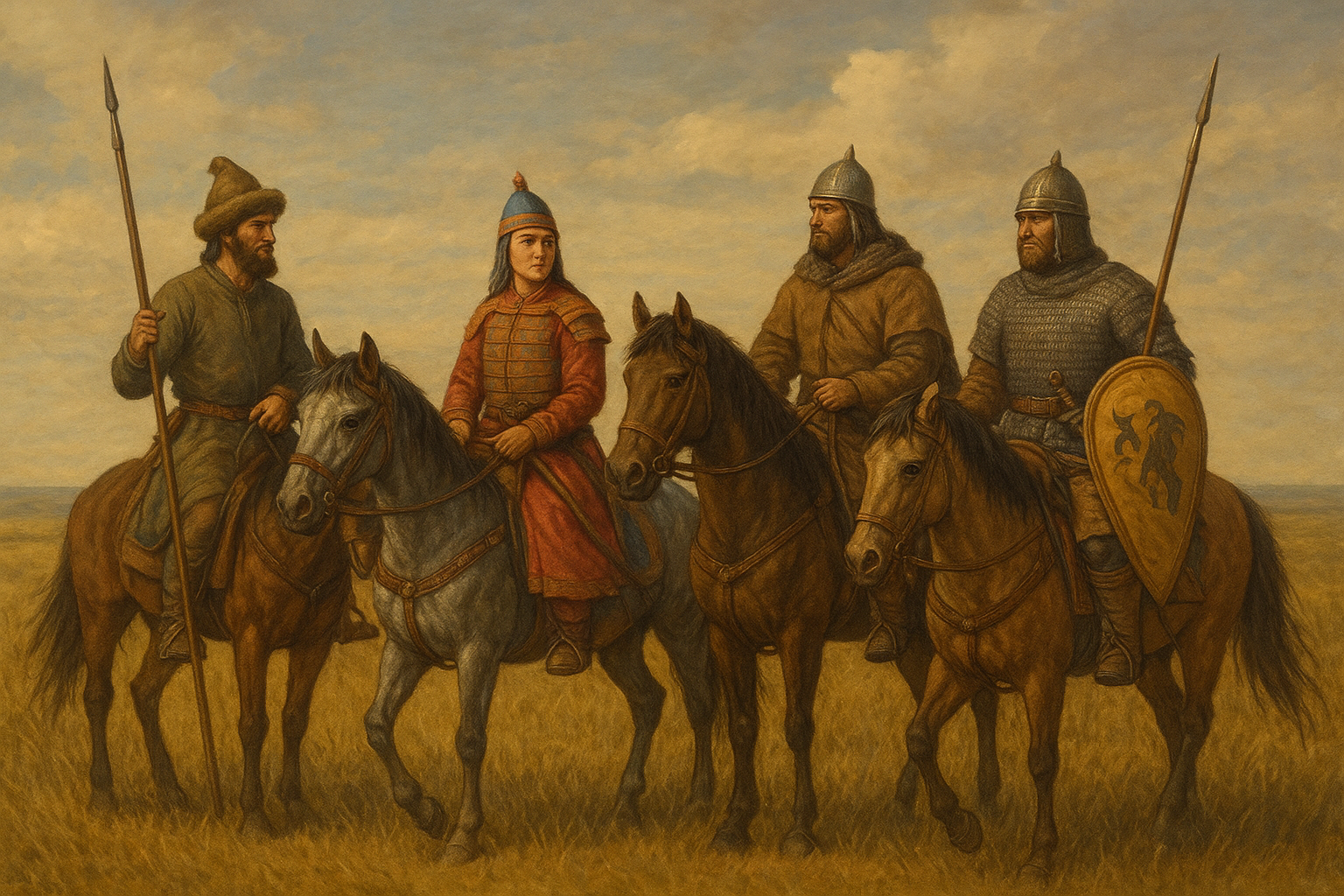Highlights
- Researchers sequenced genomes from 300 ancient individuals linked to medieval steppe cultures.
- Study uncovers how migrations and intermarriage shaped the ancestry of groups like the Khazars, Alans, and early Hungarians.
- Genetic data show blended origins, mixing East Asian, Iranian, and European lineages.
- Findings rewrite the history of medieval Eurasia, highlighting the steppe as a genetic melting pot.
- Provides new insights into how ancient movements shaped modern populations in Eastern Europe and Central Asia.
TLDR
A large-scale DNA study by Choongwon Jeong, László Révész, Guido Gnecchi-Ruscone, and colleagues reveals the complex ancestry of medieval nomadic groups. The results show the Eurasian steppe acted as a crossroads where peoples from east and west intermingled, profoundly influencing later European and Central Asian populations.
The Mystery of Steppe Nomads
The Eurasian steppe—stretching from Hungary to Mongolia—was home to powerful nomadic cultures that shaped medieval history. Groups such as the Khazars, Alans, and Magyars (ancestors of Hungarians) controlled trade, waged wars, and connected East and West through the Silk Road.
But their exact genetic origins have long been debated. Did they descend from eastern nomads like the Xiongnu, or were they primarily local European groups? Written records give partial answers, but genetic data have now provided clearer evidence.
Ancient DNA as a Time Machine
In the new Nature study, researchers analyzed DNA from 300 ancient individuals buried in medieval cemeteries across Hungary, Ukraine, Russia, and Central Asia. Using advanced techniques, they reconstructed population histories spanning the 6th to 14th centuries CE.
The genetic results reveal that steppe nomads were not homogeneous. Instead, they represented blended populations, combining:
- East Asian ancestry from nomadic groups migrating westward.
- Iranian-related ancestry from Central Asian farmers and herders.
- European ancestry from Slavic and Germanic groups.
This mixing created the distinctive genetic signatures seen in medieval steppe cultures.
The Case of the Hungarians
One of the most striking findings concerns the Magyars, the early Hungarians who migrated into the Carpathian Basin around the 9th century. Genetic data show they carried a blend of Uralic, East Asian, and European ancestry, confirming both their ties to steppe nomads and their integration with local European populations.
This supports historical accounts that the Hungarians emerged from a fusion of eastern steppe peoples with western neighbors.
The Steppe as a Melting Pot
The results paint the steppe not as a land of isolated tribes but as a genetic crossroads. Trade, migration, and conquest constantly reshaped populations, leading to dynamic shifts in ancestry over centuries.
For example:
- The Khazars, who ruled a vast empire in the 8th–10th centuries, show genetic input from both East and West.
- The Alans, linked to Iranian-speaking groups, also display strong evidence of intermarriage with neighboring peoples.
Why This Matters Today
The study not only enriches medieval history but also helps explain the genetic roots of modern populations in Eastern Europe and Central Asia. Many present-day groups carry signatures of these medieval mixtures.
It also highlights how migration and cultural interaction have always been central to human history—a timely reminder in today’s debates about identity and belonging.
Source: Jeong, C., Révész, L., Gnecchi-Ruscone, G., et al. (2025). The genomic origins of medieval steppe nomads. Nature. https://doi.org/10.1038/s41586-025-09419-8

